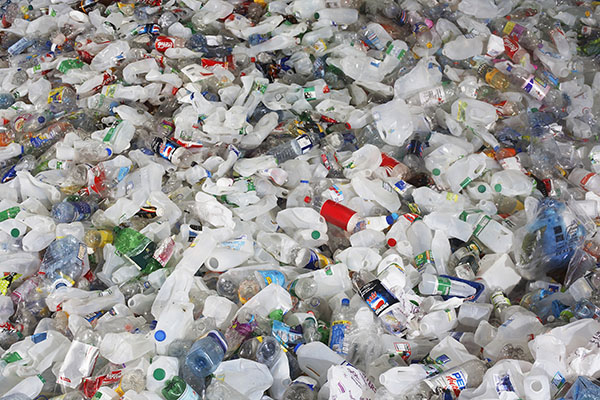Plastic is a ubiquitous and life-saving product, but it is also rapidly becoming a significant environmental problem. Globally, less than 10 percent of plastics are recycled, about 12 percent are incinerated, and the vast majority are disposed of in landfills or littered in the natural environment. Reasons for this low rate of recycling include the low cost of feedstocks (monomers) derived from oil; inexpensive landfill space; and the fact that some plastics, such as poly(vinyl chloride), low-density polyethylene, polypropylene, and polystyrene have chemical properties that make them difficult to recycle. See also: Petroleum products; Plastic waste pollution; Polymer; Polyolefin; Polystyrene; Polyvinyl resins

At present, mechanical recycling is the main method for recycling plastics, but this method has limitations. In mechanical recycling, waste plastics are melted and formed into new products that are often of lower quality than the original products. This process is known as downcycling. Even downcycled plastics eventually become non-recyclable and end up in landfills. Most plastics can only be recycled once or twice due to contamination from mixing with other plastic types or thermal degradation of their useful properties such as chemical and impact resistance, strength, and stiffness. See also: Recycling technology
An alternative recycling method, called chemical recycling, is gaining traction because it promises to turn plastic waste into useful chemicals, some of which could be remade into new plastics. Converting recycled products into high-value materials or chemicals is known as upcycling. The two main techniques for chemically recycling waste plastics are depolymerization and pyrolysis. In depolymerization, also known as monomer recycling, waste plastics are broken down to starting materials (monomers) to make plastics equal in quality to virgin plastics produced from petroleum-derived feedstocks. Polyester and polystyrene are examples of “depolymerizable” plastics. The pyrolysis process breaks down long-chain polymers into shorter-chain hydrocarbons (preferably naphtha) at high temperature (400 to 500 degrees Celsius) in the absence of oxygen. Naphtha is a saturated hydrocarbon mixture that can be further broken down (cracked) into smaller hydrocarbons such as ethylene and propylene. Pyrolysis is particularly useful for handling mixed-waste plastics, such as mixtures of polyethylene and polypropylene, as well as hard to recycle products, such as carpets, takeout food containers, and plastic bags. See also: Cracking; Naphtha; Polyester resins; Pyrolysis
More than 20 companies worldwide are developing depolymerization and pyrolysis processes, with some already operating near-production-scale plants. Chemical recycling is unlikely to be the only answer to the plastic waste problem, as mechanical recycling and incineration will be needed as well. In terms of environment benefits, chemical recycling reduces plastic waste pollution, avoids incineration, reduces production of virgin plastics from petroleum, and prevents landfilling. Although chemical recycling produces more greenhouse-gas emissions than mechanical recycling, it is, by far, a more sustainable practice than incineration or landfilling. See also: Global warming; Greenhouse effect





